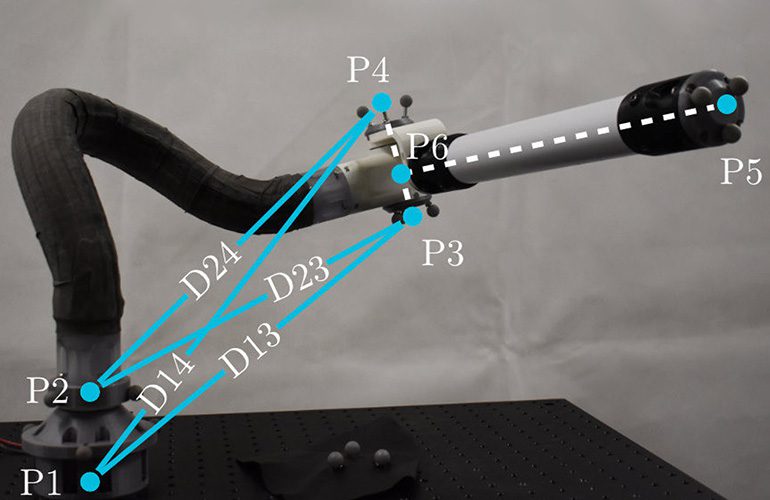
Augmented Reality Now Aids Twisting of Malleable Robotic Arm
Imperial researchers developed a malleable robotic arm for multiple applications. It is also user-friendly in that this robot could be twisted into shape with the help of augmented reality (AR) googles.
This research was published in the IEEE Robotics & Automation Magazine and authored by Dr. Nocloas Rojas (Dyson School of Design Engineering of Imperial College), along with co-first authors Ph.D. researchers Alex Ranne (Department of Computing) and Angus Clark (Dyson School of Design Engineering),
In contrast to the rigid limbs and firm joints of many robotic arms, this malleable robot possesses a level of flexibility that allows it to twist in all directions and lock into place. Slippery layers of mylar sheets inside, which slide with each other, support this versatility.
In practice, the person working with the robot would have to bend it to the needed shape. However, bending or twisting a robotic arm precisely in shape without guidance is easier said than done. As Dr. Rojas noted, one of the key concerns in adjusting these robots is accuracy in the new position. Humans are not so great at ensuring that the robot would be adjusted accurately to match the template.
This is why the researchers have employed the use of AR to aid users on this challenge. Researchers at Imperial’s Robotic Manipulation: Engineering, Design, and Science have developed a system that would help users shape the robot accurately using augmented reality (AR) goggles. Armed with mixed reality smart glasses and a motion-tracking camera, the user simply needed to adjust the robot to match the template or design superimposed onto their real-world environment. When the robot has been successfully configured, the template will turn green, and the robotic arm could be locked into place.
With this, users could have a range of positions for broad applications. This simplifies the idea of adjusting a malleable robot even without much technical expertise. This system was tested on five men (20-26 years of age) with experience in robotics but not in manipulating malleable robots. Participants managed to shape the robots accurately, as published in IEEE Robotics & Automation Magazine.
This makes the robotic arm readily customizable for multiple applications, including manufacturing and building and vehicle maintenance. This robotic arm could also be gentle enough to be used as an extra hand in injury rehabilitation. Further, because it is lightweight, it could also be considered for spacecraft use.
This content was originally published here.

